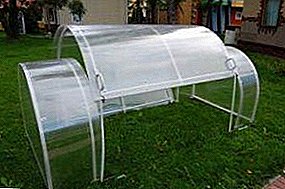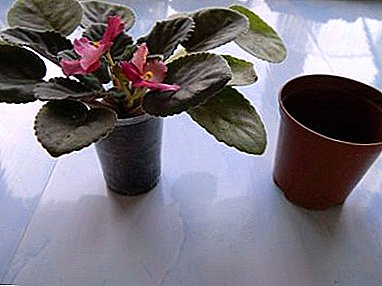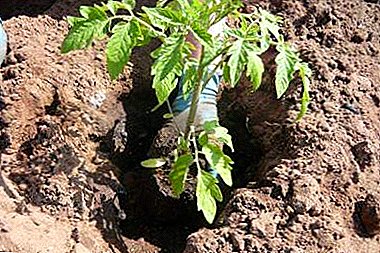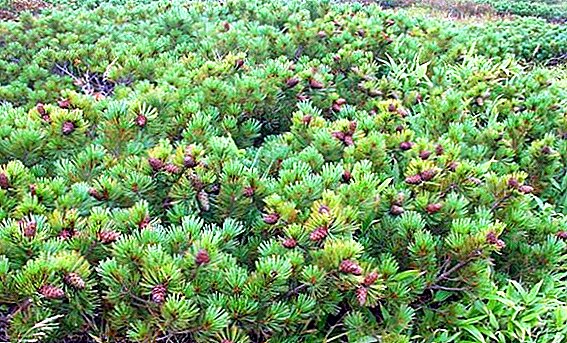
Winter is one of the most important problems of almost every owner of a conventional greenhouse. After all, it is precisely in this season of the year that the structure, which is intended for the cultivation of various crops, is experiencing "not the best times."
So, an ice crust gradually builds up on the roof of the structure, adversely affecting the state of the greenhouse. There are two ways out of this situation - to assemble and disassemble the greenhouse roof every year or to make a special frame with removable roof.
It should be noted that reliable protection against a break under a load of ice and snow is not the only advantage that this type of greenhouse has.
Rooftop greenhouse - advantages and disadvantages
One of the most important advantages of a greenhouse with a removable top is its relatively low cost, which is only about 5% higher than the cost of simpler structures. 
Also to the pluses of a greenhouse with a removable roof its other technical features include:
- Thanks to a removable roof, snow falls inside the greenhousetightly covering the ground. As a result, the soil is protected from drying out and desalting, as well as the extinction of beneficial microorganisms.
Thus, it is possible to avoid almost annual attraction in the greenhouse along with the soil of new parasites and rather dangerous pathogens of infectious diseases;
- Due to the fact that the snow falls and props the walls of the structure not only from the outside, but also from the inside, there is a maximum pressure equalization, which is created under a sufficiently large load on the covering material.
As a result, a longer greenhouse operational life is guaranteed, because under heavy layers, especially of wet snow, even the most “high-quality” frame can collapse;
- Permanent overheating protection - Removable roof of the greenhouse with his hands is useful, both in cold and in hot season.
It is the original alternative to conventional vents. Such ventilation runs evenly and without drafts, which adversely affect the development of all crops;
- Good daylight provided by a folding roof.
After all, even polycarbonate made using the most modern technologies absorbs the so-called “useful” spectra of sunlight, depriving the soil and plants of the necessary components of development;
- Greenhouses are easy and fairly quick to assemble and install., but it takes only a few minutes to remove or put the roof back.
Preparatory work
 Despite the fact that the greenhouse, in its main purpose, provides maximum protection for vegetables, flowers and undersized plants from negative environmental factors (mainly weather conditions). That is why the country greenhouse with the roof removed for the winter is of great relevance.
Despite the fact that the greenhouse, in its main purpose, provides maximum protection for vegetables, flowers and undersized plants from negative environmental factors (mainly weather conditions). That is why the country greenhouse with the roof removed for the winter is of great relevance.
It is also necessary to take extra care to create inside it. favorable conditions for growing those or other crops. A significant role in this is played by the correct location of the greenhouse.
First of all, you need to choose a place on the plot that will be well lit for quite a long time, as a result of which a large amount of sunlight will fall inside the structure. It is desirable that the surface of the site was smooth and was not even under an inconspicuous slope.
And the most important criterion for the selection of the site - nothing should prevent the rapid removal and return of the roof back.
Typically, these greenhouses are not used in the winter. This is due to the features of their design.
Thus, in most cases, the roof is removed specifically so that snow does not accumulate on its surface, and ice crust does not form. In addition, it allows create uniform pressure on the walls of the building on both sides, which significantly reduces the risk of its destruction. However, in warmer regions such greenhouses are sometimes operated during the cold season.
In addition, you should decide in advance on what type of greenhouse will be with a sliding top - stationary, folding or portable.
The best option is considered stationary greenhouse. Nevertheless, folding and portable greenhouses are distinguished by one important feature, which is that if necessary, the structure can be dismantled and hidden in any convenient place or change its location without putting too much effort into it.
However, stationary-type greenhouses have a foundation (usually a tape shooting gallery), which, in fact, causes them more high resistance to high loadsas well as weather conditions.
The next stage of the preparatory work is to determine the parameters of the future greenhouse. Its size should correspond to the type of plants that will be grown in it.
Then you need to make a drawing of a greenhouse. In this scheme, all the details of the building must be marked, starting with the door and ending with small air vents.
A photo
The photo shows a greenhouse with a sliding roof.





Greenhouse with a removable roof do it yourself
Today distinguish several types of greenhouse designsEquipped with removable roof:
- Removable and lifting roof;
- Sliding greenhouse case;
- Convertible greenhouse;
- A budget option.
Recently, the so-called convertible greenhouses. Their prevalence is due to a rather simple installation and use technology.
This greenhouse with opening top is an option equipped with special windows coupe. In this case, the roof does not need to be removed - it moves only from the sides.
In the warm season, such a mechanism is used as a conventional vent, and in the cold - ensures the ingress of snow inwards on the ground. So, after the harvest is complete, you only need to move part of the roof of the greenhouse.
It should be noted that such designs provide for the presence of two compartments, in each of which you can create completely different conditions for growing vegetables and other plants.
In addition, you can give preference to the second version of the design, in which the meter sheet polycarbonate should be moved down.
To build a greenhouse with a sliding top, you must perform the following steps:
- choose a place for the greenhouse;
- prepare the foundation. As a rule, it becomes shallow and is filled with concrete. However, you can simply lay a wooden beam around the perimeter, pre-treated with special antiseptics. The depth of the foundation for huge structures should be greater than for small ones;
- side walls are put. This process is carried out on the same principle as in other types of greenhouses;
- roof installation. At the top, a profile with grooves is fastened through each meter, into which polycarbonate sheets are then inserted;
- it is necessary to fix the sides special clamps to prevent the roof from going to the side;
- at different ends of the greenhouse put two vents and one door.
Many owners of this type of greenhouse claim that ideal for successful crop production. However, such structures have a disadvantage - poor sealing, which sometimes does not save the plants from heavy rain.












